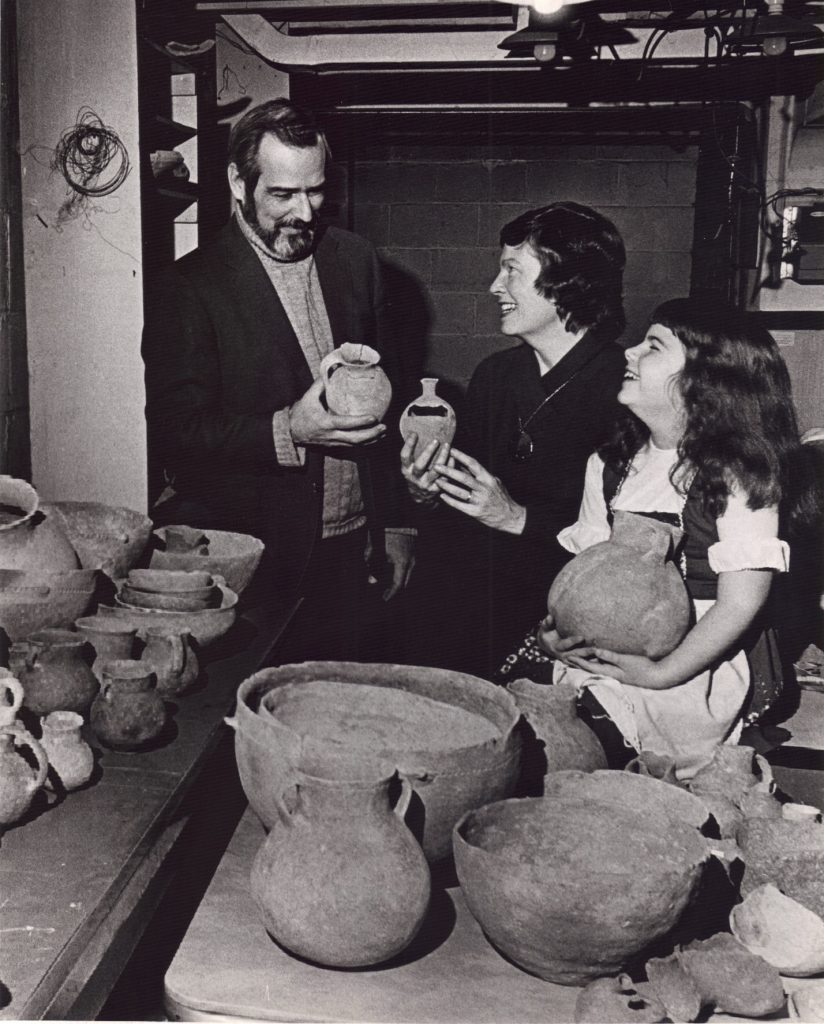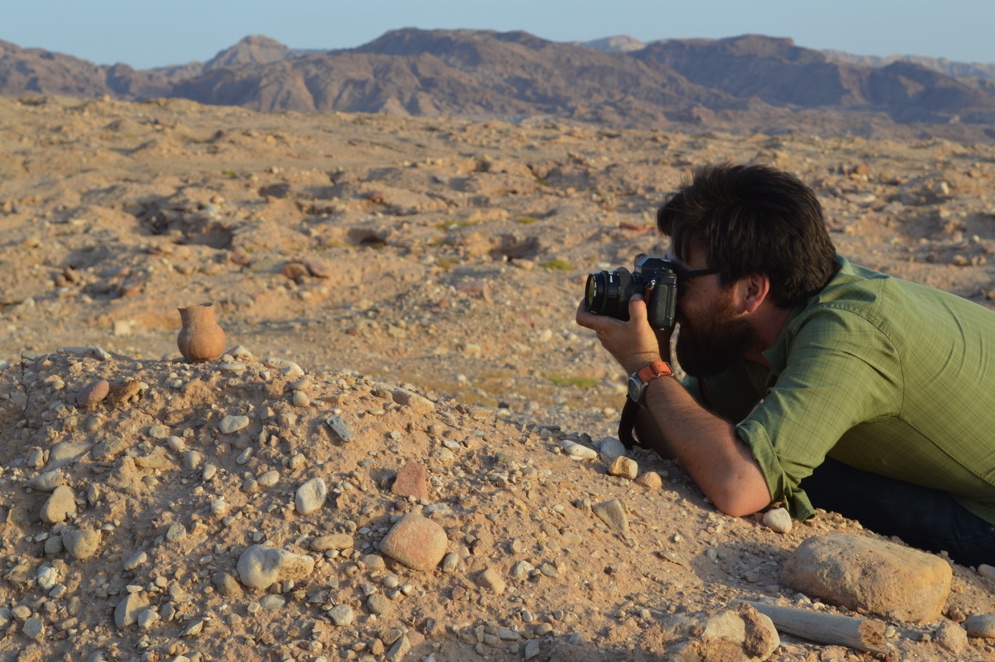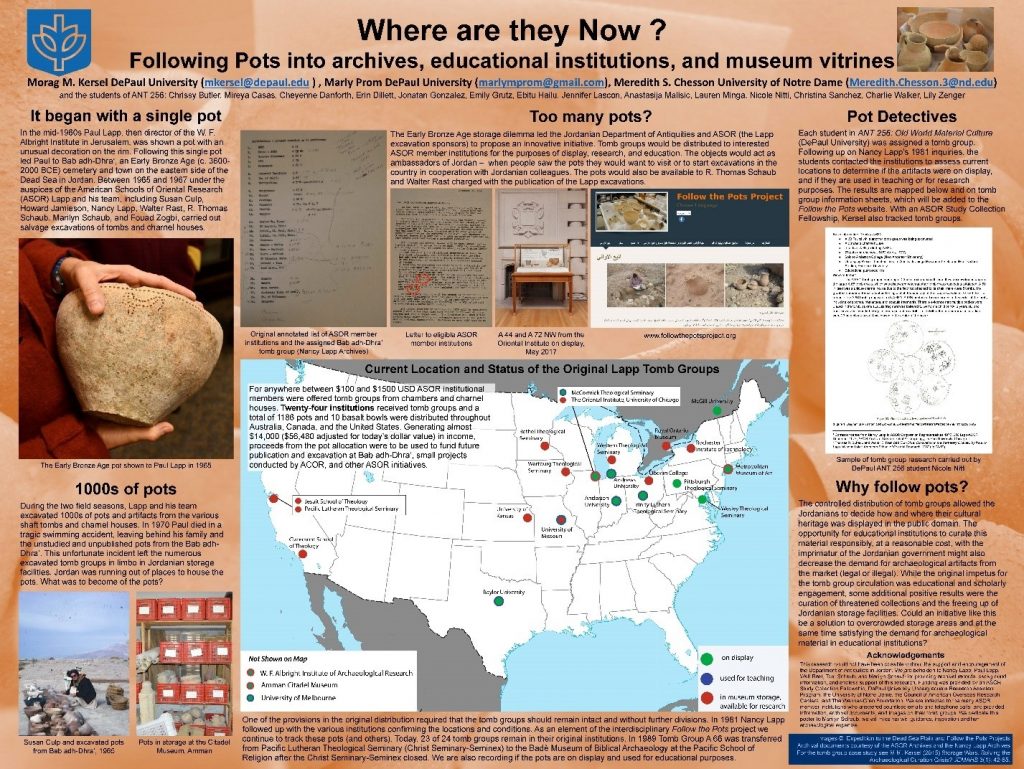Who We Are
- Dr. Morag M. Kersel (Dept. of Anthropology, DePaul University)
- Dr. Meredith S. Chesson (Dept. of Anthropology, University of Notre Dame)
- Dr. Austin (Chad) Hill (Dept of Anthropology, University of Pennsylvania)
Dr. Morag M. Kersel (DePaul University, Dept. of Anthropology)
With over 20 years of fieldwork experience in the eastern Mediterranean, Morag Kersel has participated in and directed archaeological field projects in Greece, Israel, Jordan, Canada, Ghana, and the United States. Over the last 5 years she has conducted archaeological ethnographies in Israel, Jordan, Palestine, the US, and Greece. Under the direction of Colin Renfrew, her PhD dissertation research combined archaeological and ethnographic approaches to examine the markets that antiquities pass through from their original resting place to the eventual purchaser (Kersel 2006). Her study of the legally sanctioned antiquities’ market as a strategy for combating the illicit trade in antiquities used Israel as a case study. She examined how these markets developed, what impact legal and illegal markets have had on site destruction, and how these circumstances guided archaeological practice in the region. This research was supported by various funding agencies including CAORC (Palestine and Jordan), the Social Sciences and Humanities Research Council of Canada, the Cambridge Commonwealth Trust, and PEO International. She has published on aspects of this ethnographic research (Kersel 2007, Kersel 2008, Kersel 2012), and given several presentations on this and the Follow the Pots research at the ASOR, AAA, and SAA conferences.
Morag’s interest in ethnographies and community engagement emerged with her master’s work in historic preservation where the focus was on public advocacy and community outreach in the urban and rural southern US and in West Africa. Her interest was grounded in a professional capacity as she spent three years working with the US Department of State in the Cultural Heritage Center where she monitored the trade in antiquities through a series of bilateral agreements with various nations. From 2013-2014 she spent 9 months living in Jordan cultivating relationships with various stakeholders involved with archaeology, museums, the trade in antiquities and the protection of the archaeological heritage of the region.
Currently, Morag is an Associate Professor at DePaul University in the Department of Anthropology. http://works.bepress.com/morag_kersel/
Dr. Meredith S. Chesson (University of Notre Dame, Dept. of Anthropology)
Her area of specialization is anthropological archaeology. Her research focuses on the integration of anthropological theory, ethnographic research, and archaeological practice in exploring the process of urbanization (or perhaps more accurately proto-urbanism) in the southern Levant (encompassing modern Syria, Lebanon, Israel, Palestine, and Jordan) during the Early Bronze Age (c.3,600-2,000 BCE). To explore the articulation of social, political, and economic structures, and the negotiation and assertion of group and individual social identities in the early walled communities of this region, she has directed excavations at Tell el-Handaquq South, el-Lejjun, and Khirbet el-Minsahlat, all located in Jordan. From 2004-2015, Meredith worked closely with R. Thomas Schaub to edit the final publications for excavations at Bab adh-Dhra`, Numayra, Fifa, and Khirbet Khanazir conducted by the Expedition to the Dead Sea Plain.
Meredith is particularly interested in learning about the lives of the people living in these early EBA communities, and with reconstructing a sense of the connections between households and governance structures in these settlements. In her research, she has concentrated on the analysis of the relationships between households, administrative, and ritual spaces in these early walled towns, as well as EBA mortuary practices. From a methodological and theoretical perspective, she is very interested in issues of difference, practice theory, mortuary practices, household archaeology, social memory and identity, and feminism and archaeological practice. Emerging from her EBA research on the southeastern Dead Sea Plain through the EDSP, she has become increasingly involved in exploring the why’s, where’s, how’s of looting archaeological remains in this region.
In 2007 she joined the Bova Marina Archaeological Project (BMAP) as a co-director and begun research on the later Bronze Age in southern Calabria, Italy. Over the last decade the team, which includes Drs. Hamish Forbes (Emeritus Professor, Nottingham University), Lin Foxhall (Professor, Liverpool University), Helen Foxhall Forbes (Associate Professor, Durham University), Giovanni Iiriti (independent scholar), Paula Lazrus (Associate Professor, St. Johns University), Kostalena Michelaki (Associate Professor, Arizona State University), John Robb (Professor, Cambridge University), Maria-Olimpia Squillaci (Fellow, Smithsonian Institute), Isaac Ullah (Associate Professor, San Diego State University), and David Yoon (Medieval and Roman freelance archaeologist), has conducted multidisciplinary research in the Bova Marina region, incorporating archaeological survey, documentary analysis of historical archives, GIS, geomorphology, ethnoarchaeology, and archaeological excavations to assess the nature of settlement, land use, social complexity, trade, and technology from the Neolithic to modern periods. The team’s research project involves an international team of scholars from the UK, Italy, and the US with ongoing survey and excavation projects running simultaneously (please see http://www.arch.cam.ac.uk/~jer39/BMAP/index.html for a full list of researchers and projects)
Currently, Meredith is a Professor at the University of Notre Dame in the Department of Anthropology.
Dr. Austin (Chad) Hill, Dept of Anthropology, University of Pennsylvania
Chad’s research focuses on the later prehistory of the Near East, with specializations in remote sensing, GIS, advanced image processing, and faunal analysis. He is the field director of the Galilee Prehistory Project, excavating Chalcolithic sites in the Galilee region of Israel, and co-Director of the Landscapes of the Dead project, using drones to monitor looting at Early Bronze age cemeteries in Jordan. As part of the Penn Paleoecology lab, Chad is working on the Landcover 6k project, using archaeological, historical, and paleoenvironmental data to improve modern climate models.
Acknowledgments and Thanks
This project would not be possible without the permissions and support of the Department of Antiquities of the Hashemite Kingdom of Jordan, the Israel Antiquities Authority, and the Department of Archaeology and Cultural Heritage in Palestine. We wish to acknowledge and offer sincere thanks to several institutions and individuals who provide critical financial and logistical support to Follow the Pots research, including the Wenner-Gren Anthropological Foundation (grant #8051), University of Notre Dame’s Department of Anthropology and the Institute for Scholarship in the Liberal Arts, DePaul University Department of Anthropology, Council for British Research in the Levant, American Center for Research in Amman, DJI, Welcome to the W.F. Albright Institute of Archaeological Research, Council of American Overseas Research Centers, American Society of Overseas Research, and the Vintage Radio Control Society.
We thank Hugh Barnes, Chris Brink, Jehad Darweesh, Basil Halasah, Jameelah Ishtaway, Mohammad Najjar, Dino Politis, Isabelle Ruben, Ayla Staelin-Lefsky, and Mohammed al-Zahran for their collaboration and contributions to the fieldwork at Fifa. Our sincere thanks to Karen Bowden Cooper and Jennifer Christmas at the Pittsburgh Theological Seminary Kelso Museum of Near Eastern Archaeology, and to former head Curator Sandy Olsen, current Head Curator Deb Harding, Assistant Curator Amy Covill, and Conservator Gretchen Anderson at the Carnegie Museum of Natural History; and to Nancy Lapp, Mark McConaughy, Jim Richards, Helen Schaub, Marilyn Schaub, and Tom Schaub for the whole-hearted support, knowledge, experience, and willingness to help in any and every way.

DePaul students Chrissy Butler, Mireya Casas, Cheyenne Danforth, Erin Dillett, Jonatan Gonzalez, Emily Grutz, Ebitu Hailu, Jennifer Lascon, Anastasija Malisic, Lauren Minga, Nicole Nitti, Marly Prom, Christina Sanchez, Quinn Tessman, Charlie Walker, and Lily Zenger followed the pots as part of ANT 256 Museums and Material Culture. The results of their work were presented in the poster session at the 2018 ASOR meeting and was the recipient of the Joy Ungerleider Poster Award.
Our research would not be possible without the support and cooperation of countless archaeologists, administrators, shopkeepers, intermediaries, looters, and collectors in Jordan, Israel, Palestine, Australia, Canada, the UK, and the US willing to discuss how they value the archaeological material culture of Fifa, Bab adh-Dhra` and en-Naqa/es-Safi. We wish to extend special recognition and profound thanks to the people of the southern Ghor villages in Jordan who offer their time, energies, insights, and trust to us as we pursue our research. While we cannot publish their names for privacy reasons, we could not have conducted our research without their support, interest, and participation.
Contact:
- Dr. Morag M. Kersel, Dept. of Anthropology, DePaul University: mkersel@depaul.edu
- Dr. Meredith S. Chesson, Dept. of Anthropology, University of Notre Dame: mchesson@nd.edu
- Dr. Austin (Chad) Hill, Dept of Anthropology, University of Pennsylvania: chadhill@sas.upenn.edu


